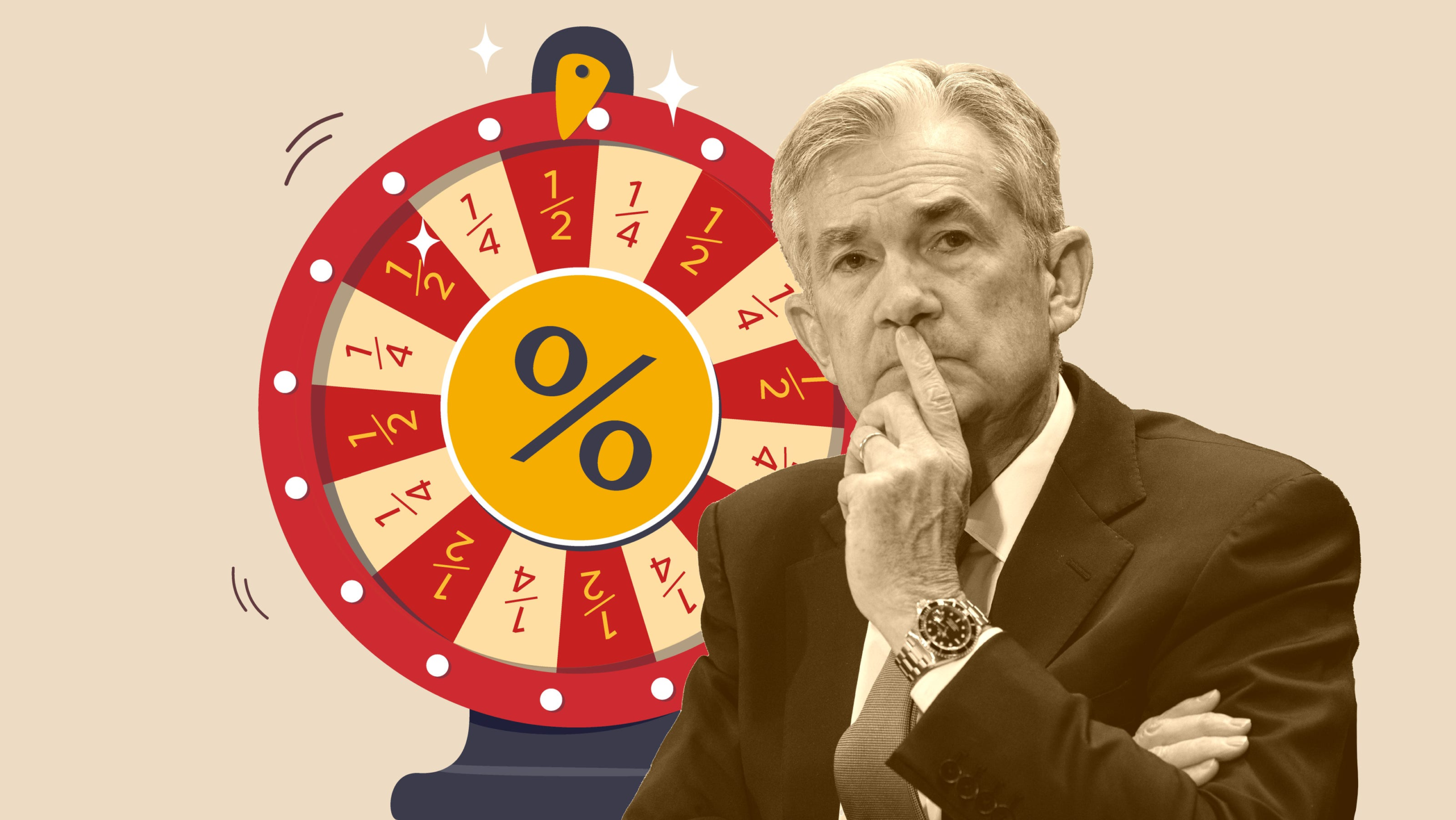On Wednesday, all signs point to the Fed ending the inflation fight it started 30 months ago.
Back then, the unemployment rate was historically low, job growth was strong and companies had more openings to fill than people to fill them. Today, unemployment stands at its 10-year average, and there are fewer jobs to go around.
As Fed chair Jerome Powell announced that first 0.25% interest-rate increase on March 16, 2022, he repeated in his comments “price stability” 23 times – underscoring their north star for months to come.
With inflation nearing the Fed’s 2% target, Powell and the other members of the Fed are retraining their focus on the other half of their mandate: maximum employment. Here’s where the economy stands on the precipice of the Fed’s next chapter.
Will the Fed cut interest rates this week?
Investors who trade short-term interest rate futures are all betting the Fed will cut rates. They just don’t agree how much. As of Monday at 10 a.m. EDT, the CME FedWatch tool shows a 41% probability that the Fed will reduce interest rates 0.25 percentage points following its meeting this week, while 59% think the cut will be twice as large, pushing the range down to 4.75%-5%.
Unable to view our graphics? Click here to see them.
The majority of interest-rate investors tracked by CME are betting that by this time next year, the Fed’s short-term interest rates will fall by at least 2 percentage points, which will likely offer additional relief for home sellers and buyers. Mortgage rates, which are more closely linked to longer-term government bonds, have already been trending down in anticipation of the Fed’s cuts.
What is the interest rate for home buyers?
A 30-year, fixed-rate mortgage averaged 3% in 2021. Rates remain more than double, according to Freddie Mac. A new $400,000 mortgage at 6.2% would cost a buyer $2,450 monthly in principal and interest, according to Bankrate’s mortgage calculator. That’s $764 more than mortgages at 3%.
What the data shows: 30-year mortgage rates have dipped to 6.2% since peaking last October, but remain well above the 10-year median of 3.95%, according to Freddie Mac’s weekly mortgage rate survey.
Mortgage rates have driven up new buyers’ monthly payments, but record, high prices have also been a drag. The median-priced existing home in July rose more than 4% in a year to $422,600, according to the National Association of Realtors.
Higher mortgage rates weigh on home sales
Existing home sales are the lion’s share of homes sold each month. The NAR reports each month’s sales at a seasonally adjusted annual rate. Annual home sales peaked in 2005 at 7.08 million units. In 2023, the annual number fell to 4.09 million units – lower than any year following the financial crisis. For the past two months, the annual rate has been just below 4 million homes.
How is the US economy doing?
The broader economy has been humming along at a pace that’s allowed the Fed to keep interest rates elevated. The U.S. economy produced $22.9 trillion of goods on an inflation-adjusted annualized basis in the second quarter, according to the BLS. That pushed up GDP by 3% from the first quarter.
What the data shows: The U.S. economy grew unexpectedly fast in the second quarter after a tepid first quarter. Some speculated after the first-quarter reading that high interest rates were starting to weigh on businesses and consumers.
The Zeta Economic Index, a monthly reading based data collected from 240 million consumers, showed last week that the economy’s upward trend continued in August, rising 0.6% from July to 67.4. The index fell to 48.6 when annual inflation peaked a 9.1% in June 2022.
The Zeta index is derived from several key indictors – most are still on the rise. The clear outlier, though, is job market sentiment. It’s down 1% from July and nearly 5% from last year. And it’s the same blinking yellow light the Fed sees now.
In his comments at the Fed’s Jackson Hole meeting in August, Powell said, “the downside risks to employment have increased” and “the time has come for policy to adjust.”
How the job market has responded to higher interest rates
Even though higher interest rates have made borrowing more expensive, businesses have continued to add jobs. In recent months, the pace has slowed, according to the Bureau of Labor Statistics. At the same time, the wealth of job openings that led, in part, to the quiet quitting phenomenon have receded, making it less likely companies will need to push up wages to find new workers and reignite inflation.
“It seems unlikely that the labor market will be a source of elevated inflation pressures anytime soon,” Powell said. “We do not seek or welcome further cooling in labor market conditions.”
While the unemployment rate has hovered around its 10-year median of 4.2% since May, the number of jobs added has declined in each subsequent month. The declines were magnified a couple weeks ago when the BLS reduced its job growth estimates for May and June by a combined 86,000 jobs.
Luckily for the Fed, inflation has fallen far enough that it can turn its attention to jobs.
How high is inflation?
Inflation, a sustained increase in prices throughout the economy, has been well above the 10-year median of 2.1% for more than three years. The Fed policymakers say they prefer a low and stable inflation rate,” so we can “make sound decisions regarding saving, borrowing and investment.”
What the data shows: Inflation has fallen significantly in the past two years but remains elevated – largely because of housing costs. In August, annual change in the U.S. inflation rate as measured by the consumer price index fell to 2.5% from 2.9% in July. The reading was the lowest since March 2021, a year before the Fed started pushing up interest rates.



